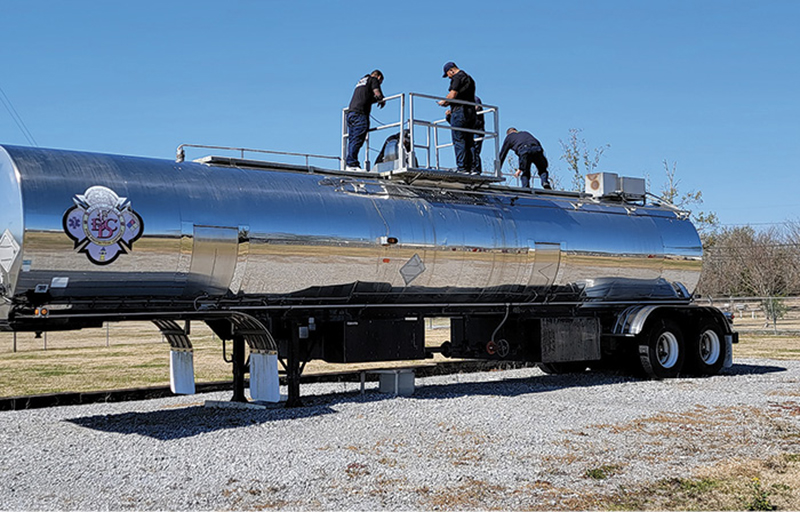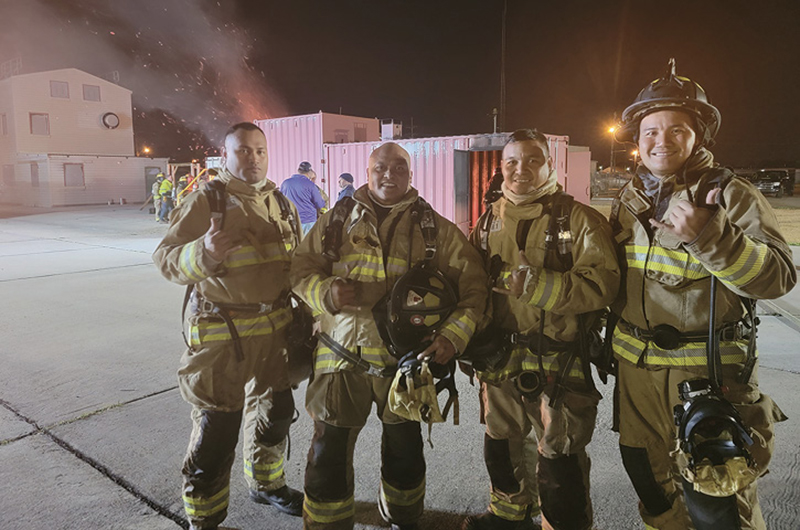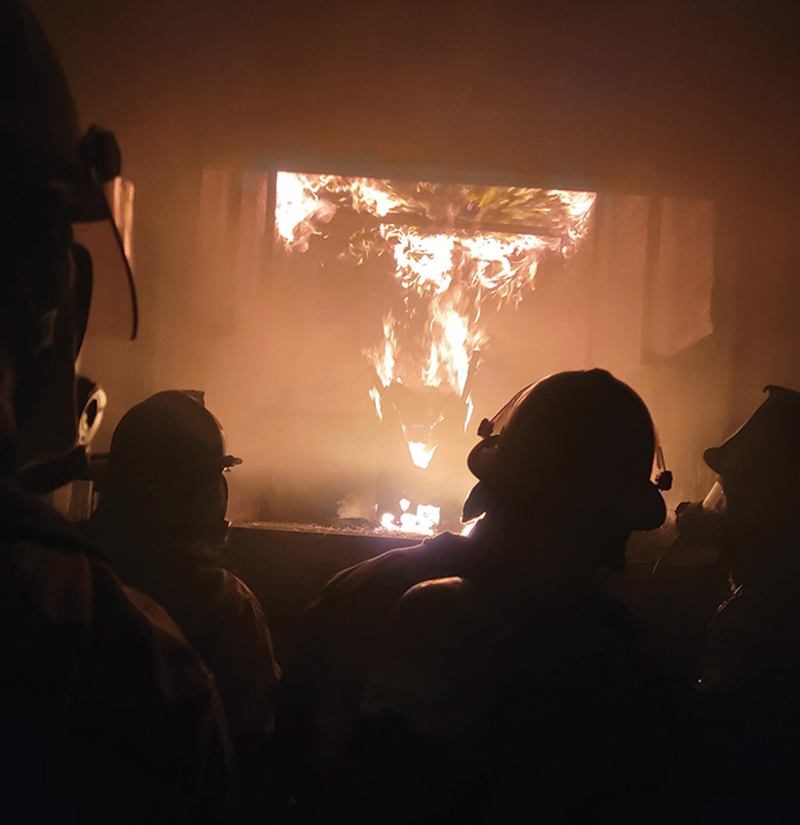For about the past seven or eight years, I’ve been quite fortunate to have been offered emergency preparedness, emergency response, and technical rescue training assignments to several United States territories and protectorates.

One of these beautiful Pacific Island chains that I’ve worked extensively on is known as the Commonwealth of the Northern Mariana Islands, or CNMI. The Commonwealth is comprised of three inhabited islands, Saipan, Tinian, and Rota, in addition to a couple of uninhabited outer islands. If you are a student of military history, you will recognize the names of these islands from bloody battles fought on them during World War II. Perhaps the most renowned piece of that history comes from the Island of Tinian, where the United States launched the Enola Gay, which carried the atomic bombs that landed on parts of Japan, which for all intent and purposes ended World War II. The atomic bomb pits (where they were stored) and runway A1-A are still in existence today.
While teaching command classes in CNMI this past fall, we were approached by the CNMI Governor Ralph Torres and the Commonwealth’s commissioner of fire and EMS. They asked if we might be willing to help them develop a regional fire training center on a new piece of land on the island of Saipan. As part of the first phase or needs assessment component of this project, we gladly accepted an opportunity to host a group of fire officers from their training division here in the States. Our goal was to show them fire training facilities here on the mainland as well as expose them to different equipment, apparatus, and training props for their new facility back on the island.

1 Among the training props firefighters from Saipan got to experience was a hazmat tanker truck prop based with the Bayou Cane (LA) Fire Department. (Photos by author.)

2 The burn building for the Houma (LA) Fire Department is comprised of a series of steel storage containers. As part of their fact-finding mission, the Saipan firefighters got to experience fire in the facility firsthand.
To show our brothers a wide range of existing training facilities and training options, our tour would take us to and through four states, starting in New York and ending in southern Louisiana.
We met our new friends at Newark Airport in New Jersey and drove them to New York City, where our whirlwind tour would begin. After some much-needed rest (CNMI is 14 hours ahead of eastern time and is a 22-hour series of plane flights), we figured what better way to start the program than to visit good friends at FDNY’s Cross Bronx Express/46 Engine, 27 Ladder. The complement from Saipan wasted no time in asking the FDNY members a hundred questions and eagerly going through their apparatus and equipment like kids on Christmas morning. They discussed everything from the differences in their respective hooks and irons to the differences in the types of building construction and fire behavior each group faced.
From the Bronx, we headed up to Suffolk County on Long Island to check out the Suffolk County Fire Academy. Suffolk County Fire Academy has a nice array of training structures and props with everything from older Class A burn buildings to state-of-the-art technical rescue training towers. Being on this facility gave the guys from CNMI a chance to compare the footprint of their available spaces to those on site in Suffolk County. Knowing that they don’t have an unlimited budget and the understanding that their facility will have to be built in phases, the discussion turned to the feasibility of “marrying” training structures together to save real estate and maximize its usage.
It’s important to note that while we offered different options to our brother from Saipan, we needed to keep a couple of environmental considerations in the forefront. Saipan is a tropical island where the warm salt air eats virtually everything. Warm season highs temperatures average right at 90°F, and the average cold season highs get down to a chilling 88°F. A weather consideration that our island friends have to consider that we fortunately don’t have here in the United States is super typhoons—severe hurricane-type storms with winds of at least 92 miles per hour and maximum sustained winds in the 200-mile-per-hour range. These storms typically also dump inches of rain per hour and have lasted as long as 36 hours. That kind of wind and rain can wreak havoc on the best of training centers.
The next day, we took our group to one of the most renowned fire training academies in the world, the FDNY’s “Rock.” With the understanding that most firefighters never get a chance to explore inside the hallowed walls of The Rock, these guys eagerly took full advantage of what friend and FDNY Lt. Mike Ciampo had to offer as our guide.

3 The Saipan firefighters got to try out the Thibodaux (LA) Fire Department’s container-based flashover prop.

4 FDNY Lt. Mike Ciampo, far left, served as the tour guide for the Saipan firefighters’ tour of FDNY’s world-famous training facility called “The Rock.”
The Rock has one of the most diverse arrays of training buildings and props anywhere in the world. The combination of classes (Class A, B, C, D, and K fires) of live fire scenarios is second to none. Our Islander partners were certainly blown away with all that the FDNY Fire Academy had to offer.
With the understanding that we had just spent the past two days showing these guys some of the “best of the best” when it comes to training facilities and appliances, we knew we would have to pare down some of the next facilities that we introduced them to. As we drove them back down to Philadelphia where we would catch a flight to New Orleans the next day, we stopped into a couple of firehouses in New Jersey to give the guys a look at East Coast working firehouses and the in-house training adjuncts we know them to have on site. Like other houses, the stations that we visited had blue door forcible entry props and a couple of great bailout, garage/roll-up door and roof vent props as well.
Our first training center stop in Louisiana was the Bayou Cane Fire Department, which houses virtually all Class B (gas-fired props). Our island colleagues got a chance to climb around in a two-story mobile burn building as well as a hazmat tanker truck prop.
We launched the final leg of our tour at training facilities in southern Louisiana. We chose these locations for a number of reasons, not the least of which being the weather, which we expected would be milder than in New York and more akin to the type of higher humidity and (at least summer) temperatures more in line with what they would deal with in the islands.
Our first stop was the Houma Fire Department, which suffered major losses from Hurricane Ida including the total loss of two stations. Houma’s training tower and burn buildings are storage container/steel container based. The training tower consists of two 40-foot containers joined end to end and erected vertically. The Class A building is also made from four containers in a two-on-two configuration. With all the storm damage , none of these training facilities looked any worse for wear.

5 One of the first stops for the Saipan firefighters was a visit to FDNY’s Cross Bronx Express/46 Engine, 27 Ladder fire station.
The next training center we visited was in Little Caillou. This facility also had a container-based Class A burn building and a homemade training tower that was framed from wooden telephone poles. Additionally, this facility also houses a nice Class B car fire prop in an enclosed trailer for portability and to keep it out of the elements.
Our final stop was the Thibodaux Volunteer Fire Department. Thibodaux has a commercially made, two-story Class A building as well as a container-based flashover prop. For their last night with us in the states, we thought it only fitting to gear them up and do some live fire evolutions. Not knowing how they offered their training presently, we suggested that they allow us to take them through the burn buildings as if they were academy recruits.
In hindsight, we learned as much on our whirlwind tour as our brothers from Saipan did. This trip allowed us to see these training facilities that we’ve worked in for years through their eyes. There are some really great training towers, burn buildings, and firefighting props out there today. I believe that when it comes to training facilities, “Bigger is better.” That said, bigger and better can still be achieved for training facilities big and small, new and old. Our brothers are now well on their way to building a first-class facility that any of us would love to learn or teach in.
CARL J. HADDON is a member of the Fire Apparatus & Emergency Equipment Editorial Advisory Board and the director of Five Star Fire Training LLC, which is sponsored, in part, by Volvo North America. He served as assistant chief and fire commissioner for the North Fork (ID) Fire Department and is a career veteran of more than 25 years in the fire and EMS services in southern California. He is a certified Level 2 fire instructor and an ISFSI member and teaches Five Star Auto Extrication and NFPA 610 classes across the country.

